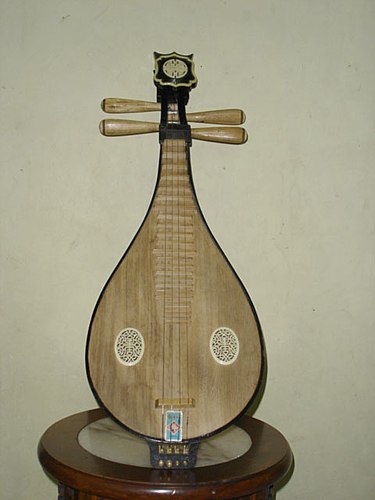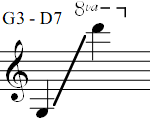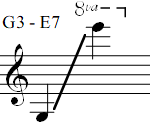MyrScript SMCore instruments database – L
L
Laouto
External links:
| Properties |
|---|
| Constant: INSTR_LAOUTO |
| Orchestra section: Plucked strings |
| MIDI section: Guitars |
Family: Lutes | | Comes from / Played in: Greece, Cyprus |
Names:- Laouto, Cretan laouto
- Laouto
- Laouto
- Laouto
- Laouto
- Laghouto, Lafta, Lavta, Steriano laouto, Nisiotiko laouto, Kritiko laouto, Politiko laouto
|
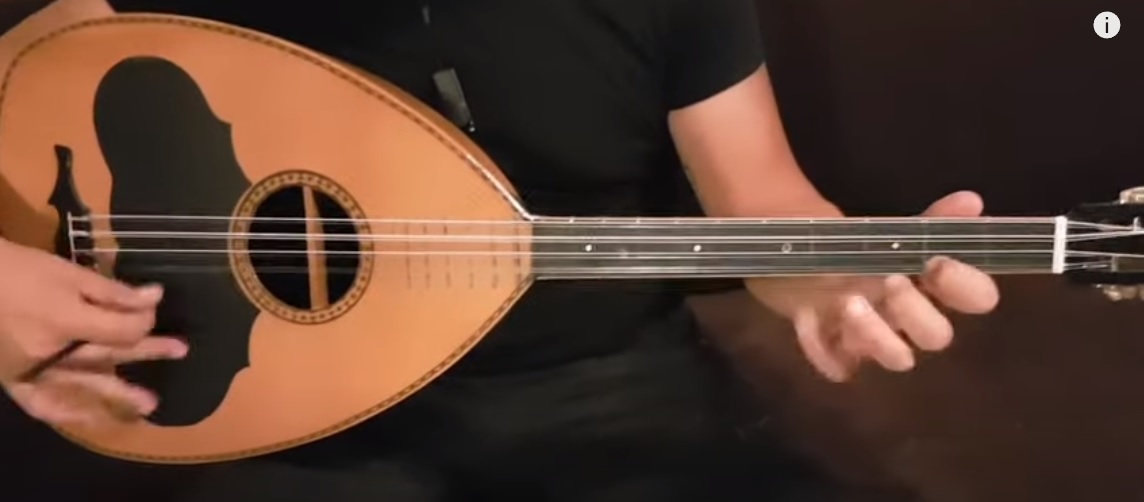 |
| Tuning | Sounding | Written |
|---|
C-G-D-A
C3C4, G2G3, D3D4, A4A4 | 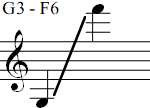 |
Kritiko laouto
G2G3, D2D3, A2A3, E4E4 | 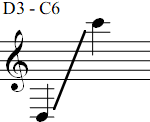 |
Politiko laouto, Lavta
D3, A2A3, D3D4, A4A4 | D3 - F6 | 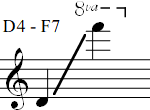 |
Launeddas
The launeddas are a traditional Sardinian woodwind instrument made of three pipes, each of which has a single reed. They are a polyphonic instrument, with one of the pipes functioning as a drone and the other two playing the melody in thirds and sixths. It requires circular breathing to produce continuous sound.
External links:
| Properties |
|---|
| Constant: INSTR_LAUNEDDAS |
| Orchestra section: Single reeds |
| MIDI section: Ethnics |
| Comes from / Played in: Italy |
Names:- Launeddas, Sardinian triple clarinet
- Launeddas
- Launeddas
- Launeddas
- Launeddas
|
Laúd
Similar, and bigger than Bandurria, tuned in fourths, one octave below Bandurria.
External links:
| Properties |
|---|
| Constant: INSTR_LAUD |
| Orchestra section: Plucked strings |
| MIDI section: Guitars |
Family: Citterns | | Comes from / Played in: Spain, Cuba, Philippines |
Names:- Laúd, Tenor Lute
- Laúd, Luth ténor
- Laúd, Tenor-Laute
- Laúd, Tenor-Laute
- Laúd, Laúd tenor, Laúd tenor
- Octavina
|
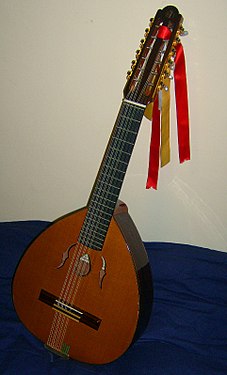 |
| Tuning | Sounding | Written |
|---|
12-strings/Spanich
G#2G#2, C#3C#3, F#3F#3, B3B3, E4E4, A4A4 | G#2 - D6 | 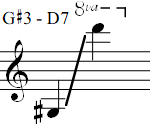 |
12-strings/Cuba
C#3C#3, F#3F#3, B3B3, E4E4, A4A4, D5D5 | C#3 - G6 | 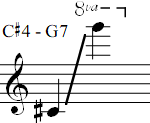 |
12-strings/Cuba, low D
D3D3, F#3F#3, B3B3, E4E4, A4A4, D5D5 | D3 - G6 | 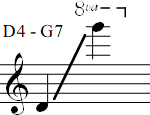 |
14-strings/Filipino, Octavina
F#2, B2B2, E3E3, A3A3A3, D4D4D4, G4G4G4 | F#2 - B5 | 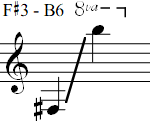 |
12-Laudón
C2, F#2F#2, B2B2, E3E3, A3A3, D4D4, G4G4 | C2 - C6 | 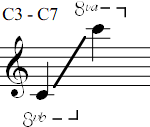 |
Laúd contrabajo
External link: Trio ASSAI - Bandurria's FAQ (archived)
| Properties |
|---|
| Constant: INSTR_LAUD_CONTRABAJO |
| Orchestra section: Plucked strings |
| MIDI section: Guitars |
Family: Citterns | | Period: 20th century |
Names:- Laúd contrabajo, Bass Lute
- Laúd contrabajo, Luth contrebasse
- Laúd contrabajo, Kontrabass-Laute
- Laúd contrabajo, Kontrabass-Laute
- Laúd contrabajo, Laúd contrabajo
|
| Tuning | Sounding | Written |
|---|
E-A-D-G
E1, A1, D2, G2 | E1 - C4 |  |
Light Baritone
The Baryton-Martin, named after Jean-Blaise Martin (sometimes referred to as Light Baritone) lacks the lower G2–B2 range a heavier baritone is capable of, and has a lighter, almost tenor-like quality.
External link: Fach - Wikipedia
| Properties |
|---|
| Constant: INSTR_LIGHT_BARITONE |
| Orchestra section: Voices |
| MIDI section: Ensembles |
Family: Opera voices | Names:- Light Baritone
- Baryton léger, Baryton-Martin
- Bariton
- Baritono leggero
- Light Baritone
|
| Sounding | Written |
|---|
 |
Liuto cantabile
External links:
| Properties |
|---|
| Constant: INSTR_LIUTO_CANTABILE |
| Orchestra section: Plucked strings |
| MIDI section: Guitars |
Family: Mandolins | Names:- Liuto cantabile, Liuto moderno
- Liuto cantabile
- Liuto cantabile
- Liuto cantabile
- Liuto cantabile
|
 |
| Tuning | Sounding | Written |
|---|
C-G-D-A-E
C2C2, G2G2, D3D3, A3A3, E4E4 | 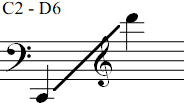 |
Long neck lutes (family)
Instruments in Long neck lutes family: 4.
Low Bass
According to J. B. Steane in Voices, Singers, and Critics, the basso profondo voice "derives from a method of tone-production that eliminates the more Italian quick vibrato. In its place is a kind of tonal solidity, a wall-like front, which may nevertheless prove susceptible to the other kind of vibrato, the slow beat or dreaded wobble."
External links:
| Properties |
|---|
| Constant: INSTR_LOW_BASS |
| Orchestra section: Voices |
| MIDI section: Ensembles |
Family: Opera voices | Names:- Low Bass
- Basse profonde
- Low Bass
- Basso profundo, Basso profondo
- Low Bass
|
| Sounding | Written |
|---|
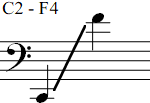 |
Low Contralto
A low female voice.
External links:
| Properties |
|---|
| Constant: INSTR_LOW_CONTRALTO |
| Orchestra section: Voices |
| MIDI section: Ensembles |
Family: Opera voices | Names:- Low Contralto
- Contralto
- Tiefer Alt
- Low Contralto
- Low Contralto
|
| Sounding | Written |
|---|
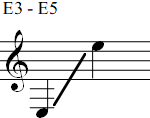 |
Low Whistle
External links:
| Properties |
|---|
| Constant: INSTR_LOW_WHISTLE |
| Orchestra section: Flutes |
| MIDI section: Pipes |
Family: Whistles | | Comes from / Played in: Irland, UK |
Names:- Low Whistle
- Low Whistle
- Low Whistle
- Low Whistle
- Low Whistle
|
 |
| Tuning | Sounding | Written |
|---|
| D |  |
Low tom
External link: Floor tom - Wikipedia
| Properties |
|---|
| Constant: INSTR_LOW_TOM |
| Orchestra section: Membranophones |
| MIDI section: Drumkits |
Family: Drumkit | Names:- Low tom, Floor tom
- Tom basse
- Tiefe Rührtrommel
- Tom grave
- Tom grave, Tom de Piso, Tambor grave
|
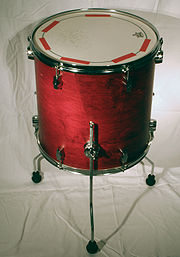 |
| Sounds |
|---|
- standard set/low tom 1
- standard set/low tom 2
- rock set/low tom 1
- rock set/low tom 2
- pop set/low tom 1
- pop set/low tom 2
- pop 2 set/low tom 1
- pop 2 set/low tom 2
- pop 3 set/low tom 1
- pop 3 set/low tom 2
- rythm & blues set/low tom 1
- rythm & blues set/low tom 2
- hip-hop set/low tom 1
- hip-hop set/low tom 2
- power set/low tom 1
- power set/low tom 2
- power 2 set/low tom 1
- power 2 set/low tom 2
- power 3 set/low tom 1
- power 3 set/low tom 2
- electronic set/low tom 1
- electronic set/low tom 2
- TR808 set/low tom 1
- TR808 set/low tom 2
- rave set/low tom 1
- rave set/low tom 2
- house set/low tom 1
- house set/low tom 2
- damaged set/low tom 1
- damaged set/low tom 2
- elecdry set/low tom 1
- elecdry set/low tom 2
- jazz set/low tom 1
- jazz set/low tom 2
- jazz 2 set/low tom 1
- jazz 2 set/low tom 2
- jazz 3 set/low tom 1
- jazz 3 set/low tom 2
|
Lupophone
Very rare instrument similar to the heckelphone, with slightly smaller bore and lower range.
| Properties |
|---|
| Constant: INSTR_LUPOPHONE |
| Orchestra section: Double reeds |
| MIDI section: Reeds |
Family: Oboes | Names:- Lupophone
- Lupophone
- Lupophon
- Lupofono
- Lupofón
|
| Tuning | Sounding | Written |
|---|
| C/Amateur | 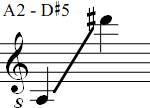 |
| C/Professional | 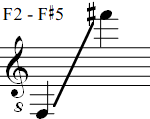 |
Lutes (family)
Instruments in Lutes family: 10.
Lyres (family)
Instruments in Lyres family: 7.
Lyric Baritone
A sweet, mild sounding baritone voice, lacking harshness. Many lyric baritone roles call for some fioritura and coloratura, a beautiful line, as well as a charismatic presenc
External links:
| Properties |
|---|
| Constant: INSTR_LYRIC_BARITONE |
| Orchestra section: Voices |
| MIDI section: Ensembles |
Family: Opera voices | Names:- Lyric Baritone
- Baryton lyrique
-
- Baritono lirico
- Lyric Baritone
|
| Sounding | Written |
|---|
 |
Lyric Bass-Baritone
The bass-baritone's required range can vary tremendously based on the role, with some less demanding than others. Some bass-baritones are baritones, while others are basses.
External link: Fach - Wikipedia
| Properties |
|---|
| Constant: INSTR_LYRIC_BASS_BARITONE |
| Orchestra section: Voices |
| MIDI section: Ensembles |
Family: Opera voices | Names:- Lyric Bass-Baritone, Singing Bass, Low lyric Barytone, High lyric Bass
- Basse-baryton lyrique, Basse chantante
- Lyrischer Bassbariton
- Lyric Bass-Baritone, Basso cantante
- Lyric Bass-Baritone
|
| Sounding | Written |
|---|
 |
Lyric Mezzo-Soprano
A lyric mezzo soprano in a lower range; the resulting sound is less piercing, more lachrymose and rather sensitive. The voices are similar, giving rise to the term 'short soprano' i.e. a soprano without the highest notes. In fact, many lyric mezzos with strong extensions to their upper vocal registers make the transition to singing as sopranos at some point in their careers.
External links:
| Properties |
|---|
| Constant: INSTR_LYRIC_MEZZO_SOPRANO |
| Orchestra section: Voices |
| MIDI section: Ensembles |
Family: Opera voices | Names:- Lyric Mezzo-Soprano
- Mezzo-soprano lyrique
- Lyrischer Mezzosopran, Spielalt
- Mezzo-soprano lirico
- Lyric Mezzo-Soprano
|
| Sounding | Written |
|---|
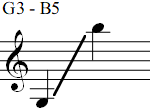 |
Lyric Soprano
Description: A more supple soprano, capable of legato, portamento, and some agility; generally has a more soulful and sensuous quality than a soubrette, who tends to be largely flirtatious and somewhat tweety. The voice is very common; thus the purity and character of the basic timbre is essential. It is the "basic" soprano voice which is at neither extremes of the soprano range of voices; it is not known for having particular vocal attributes such as power, stamina, technical prowess, or agility. However, there are several lyric sopranos that possess a quantity of many of these vocal attributes, thus allowing them to sing a broader variety of roles. Nevertheless, the core of the true fundamentally lyric voice does not encompass such traits. Innocence, vulnerability and pathos are usually conveyed in the music written for the characters portrayed by the lyric soprano because of this endearing simplicity. This fach is also famous because the voices usually remain especially fresh until advanced age.
External links:
| Properties |
|---|
| Constant: INSTR_LYRIC_SOPRANO |
| Orchestra section: Voices |
| MIDI section: Ensembles |
Family: Opera voices | Names:- Lyric Soprano
- Soprano lyrique
- Lyrischer Sopran
- Sopranoo lirico
- Lyric Soprano
|
| Sounding | Written |
|---|
 |
Lyric Tenor
External links:
| Properties |
|---|
| Constant: INSTR_LYRIC_TENOR |
| Orchestra section: Voices |
| MIDI section: Ensembles |
Family: Opera voices | Names:- Lyric Tenor
- Ténor lyrique
- Lyrischer Tenor
- Tenor lirico
- Lyric Tenor
|
| Sounding | Written |
|---|
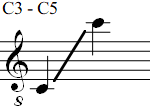 |
Lyric coloratura Soprano
Usually (but not always) a light soprano who has a high voice. Can often have small voices lacking the richness and resonance of a dramatic soprano. Must be able to do fast acrobatics with easy high notes. Many have extremely high ranges (with notes above the F of the "Queen of the Night"), but there are also singers in this Fach who do not regularly sing higher than the high E♭6.
External links:
| Properties |
|---|
| Constant: INSTR_LYRIC_COLORATURA_SOPRANO |
| Orchestra section: Voices |
| MIDI section: Ensembles |
Family: Opera voices | Names:- Lyric coloratura Soprano
- Soprano lyrique colorato
- Lyrischer Koloratursopran
- Soprano di coloratura
- Lyric coloratura Soprano
|
| Sounding | Written |
|---|
 |
Lyric comic Bass
External links:
| Properties |
|---|
| Constant: INSTR_LYRIC_COMIC_BASS |
| Orchestra section: Voices |
| MIDI section: Ensembles |
Family: Opera voices | Names:- Lyric comic Bass, Lyric buffo
- Basse bouffe lyrique
- Spielbass
- Lyric comic Bass
- Lyric comic Bass
|
| Sounding | Written |
|---|
 |
Lyric dramatic Soprano
Italian version of this fach is the spinto, which literally translated means pushed. However this is not accurate in terms of these singers' vocal production. A lyric dramatic soprano has a lyric instrument that can also create big sounds, cutting through an orchestral or choral climax. This voice is sometimes referred to as a "young" or "youthful" dramatic soprano although this term doesn't necessarily refer to the singer's age but rather to the tonal quality of the voice. This fach is more clearly delineated in the German system than in the American system. Depending on the singer, however, this voice type can be versatile, as it lies at neither extreme of the soprano spectrum. Spintos are occasionally able to take on lighter mezzo roles or conversely, lyric and even coloratura roles.
External links:
| Properties |
|---|
| Constant: INSTR_LYRIC_DRAMATIC_SOPRANO |
| Orchestra section: Voices |
| MIDI section: Ensembles |
Family: Opera voices | Names:- Lyric dramatic Soprano
- Soprano demi-caractère
- Jugendlich dramatischer Sopran
- Soprano lirico spinto
- Lyric dramatic Soprano
|
| Sounding | Written |
|---|
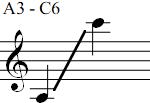 |
Lyric dramatic Tenor
A tenor with a dramatic extended upper range with the necessary brightness to come through the orchestra's texture.
External link: Fach - Wikipedia
| Properties |
|---|
| Constant: INSTR_LYRIC_DRAMATIC_TENOR |
| Orchestra section: Voices |
| MIDI section: Ensembles |
Family: Opera voices | Names:- Lyric dramatic Tenor, Tenor spinto
- Ténor lyrique dramatique
- Jugendlicher Heldentenor
- Tenor lirico dramatico
- Lyric dramatic Tenor
|
| Sounding | Written |
|---|
 |












